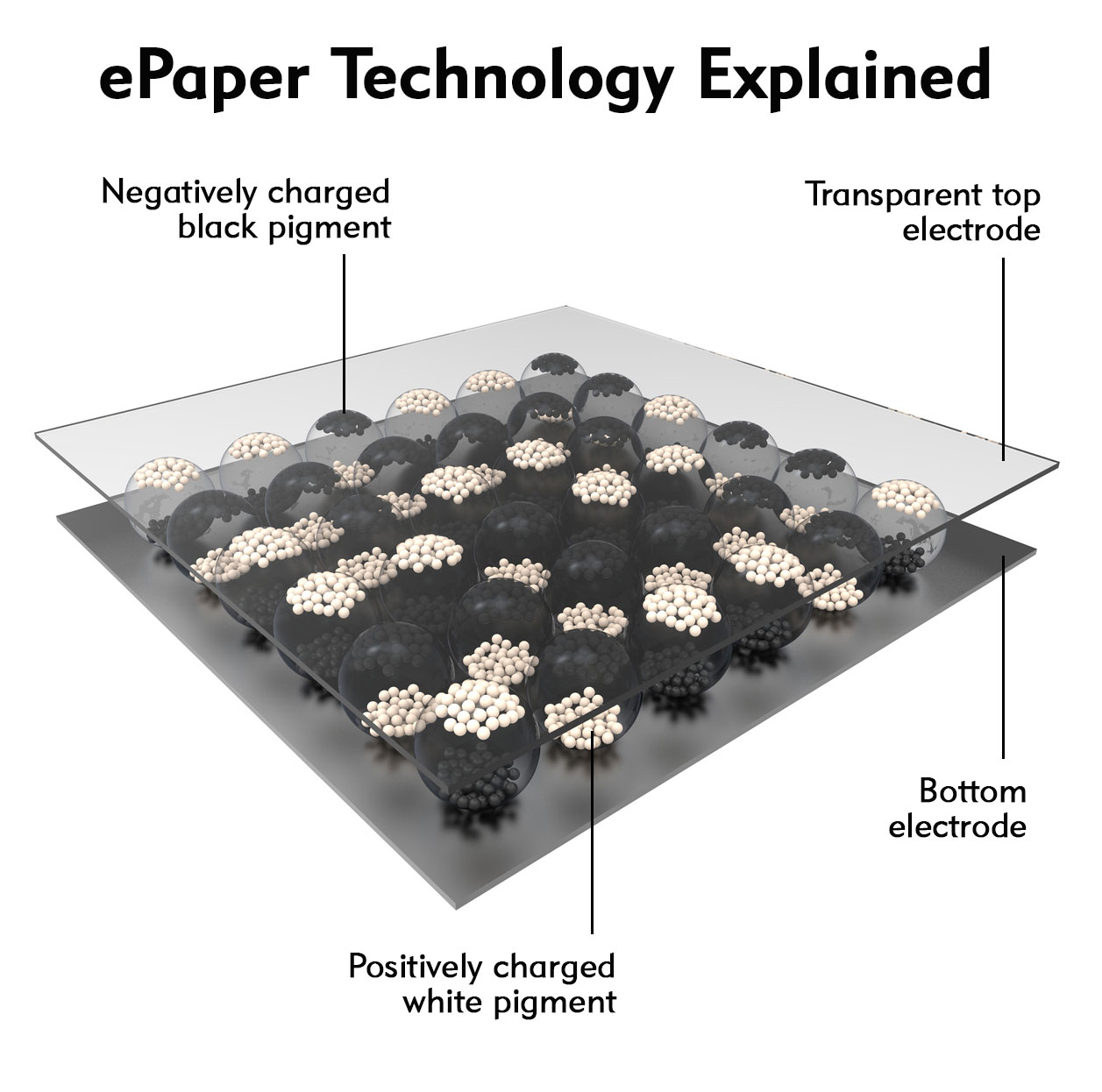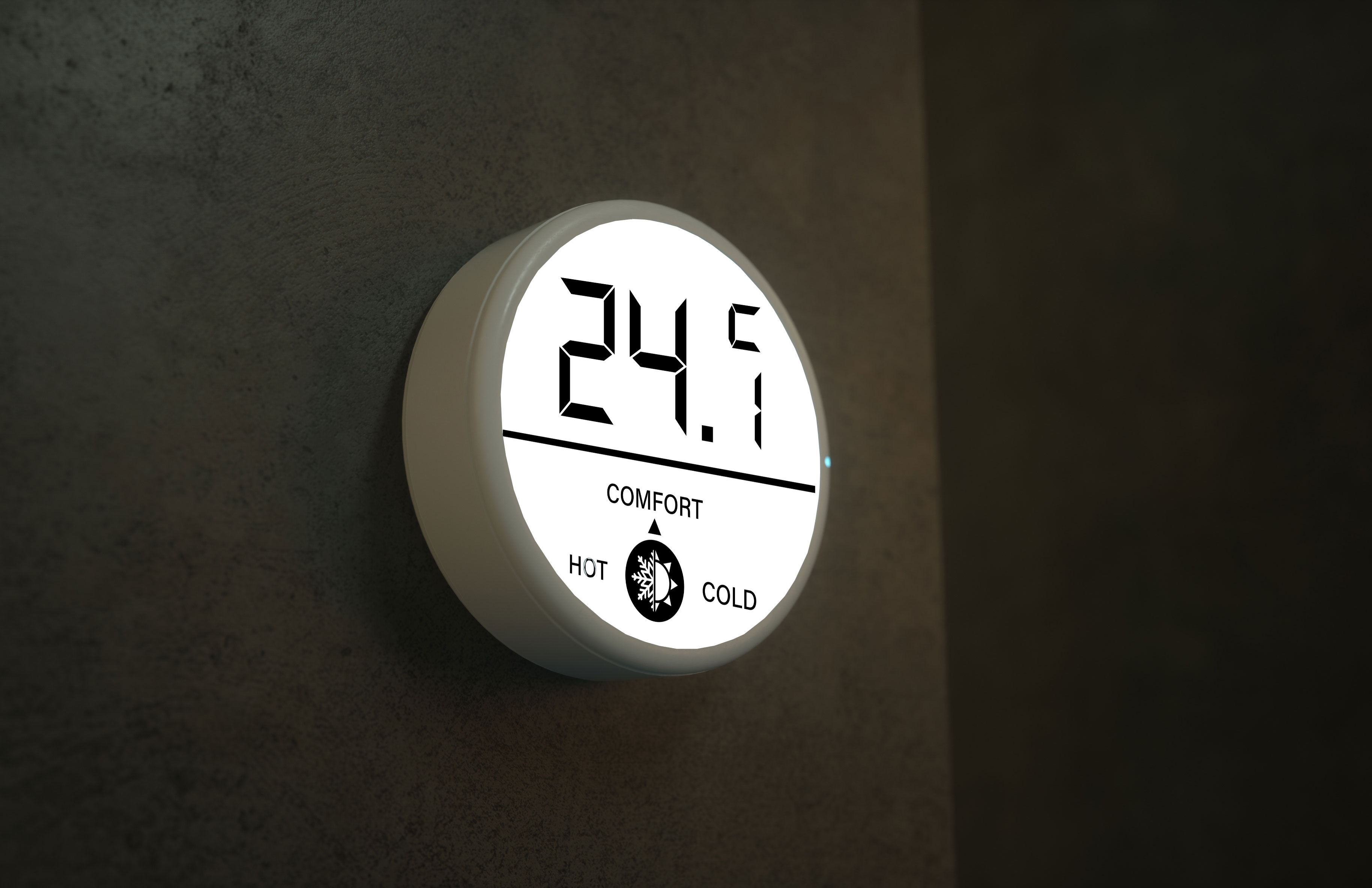E-Paper
E-Paper displays, also referred to as E-Ink displays, are extremely low power, monochrome displays which are designed to look like ink on a piece of paper. They are reflective displays meaning they have no backlight and therefore use very little power. The content on the display can be viewed in full sunlight and at very wide viewing angles. They are probably best known for e-readers such as the Amazon Kindle, but are now increasingly popular in industrial designs
Holds a static image without power
E-paper display differ from LCD displays because they only consume power to change an image on the display.
This is possible because electronic paper technology is bistable, meaning it has two states, reflective or non reflective - ie black or white. In the case of the black on a e-Paper display, this is available in 16 different forms of greyscale and in more advanced modules 7 colours can also be supported. Energy is needed to put the colour particles in place, but once they are there, they stay there without the need for additional power, unlike an LCD which would need to refresh several times per second, hence consuming power. This feature of e-paper displays means that devices can run for weeks or months on a single battery.
Easy to read with no glare
E-paper displays are reflective, which means that the light from the environment is reflected from the surface of the display, just like with paper and therefore very easy to read in direct sunlight. This also means the display is kinder to the users eyes.
Some of the benefits of using an E-paper display
- High contrast highly reflective graphic display modules
- Anti-glare display surface
- Paperwhite background
- Uses E-Inks unique electrophoretic display technology
- Technology as used in the e-Reader application.
- Ultra-wide viewing angles, in all directions
- Built-in driver IC
- Built-in dc/dc circuit for generating VCOM, gate and source driving voltages
- Ultra-low current deep sleep mode
- Ultra-low power consumptions
- Only draws power when updating contents of screen
- Ultra-light weight
- Ultra-thin.
- Up to 16-grey shades/levels support on selected displays
- Up to 7 colours supported on selected displays
- Ideal for display applications where infrequent screen updates are required
- Available in screen sizes from 1.54” to 42”
- Commercial temperature grade (0°C to 50°C).
How does e-paper work?
Each electronic paper display is made up of millions of such capsules in a thin film, with the particles inside the capsules of different colors and different electric charges. Electrodes are placed above and below the capsule film. When a positive or negative electric field is applied to an individual electrode, the color particles with the corresponding charge will move either to the top or bottom of a capsule, making the surface of the e-paper display appear a certain color.
See the video below from e-ink.

